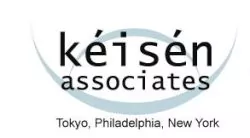Japan is like the United Kingdom a constitutional monarchy with an emperor residing in the palace at the heart of Tokyo. And to this day, the imperial era names selected for each successive emperor (empress) are used to date many public documents. The current emperor’s reign has been called Heisei, but in anticipation of his coming retirement in 2019, a new era name will be unveiled soon.
The Japan Patent Office, in order to prevent a rush to turn the current era name Heisei into a trademark when it is retired, made an announcement on June 22 that it will treat imperial era names, past or current, as not distinctive and therefore not trademark-worthy. (The rules for examiners before that did specify current imperial eras as indistinct and not allowable, so this announcement changes the situation for retired names only.)
In addition, the JPO explained in this announcement that distinctiveness is lacking for even a past era’s name (like Heisei), so even if combined with a generic product like “Heisei manjuu [Japanese sweet cake]” used in the category of manjuu will fail to meet requirements of distinctiveness.
On the other hand, the JPO allows that if a particular product or service is named something including an era like “Heisei” and is distinguished by that name (for example, a sake producer has already filed for a trademark for “Arigato [thank you] Heisei”), then it may be deemed distinctive and allowable for registration.
Money Post‘s August 15 article, citing the example of possibly allowable trademarks above, concludes that the upcoming imperial era name also may be at the center of a flurry of trademark applications seeking to win choice combinations with that new era name. As always, judicious choice of distinctive terms will be important for getting a valid trademark registration in Japan.
The content of this article is intended to provide a general guide to the subject matter. Specialist advice should be sought about your specific circumstances.

